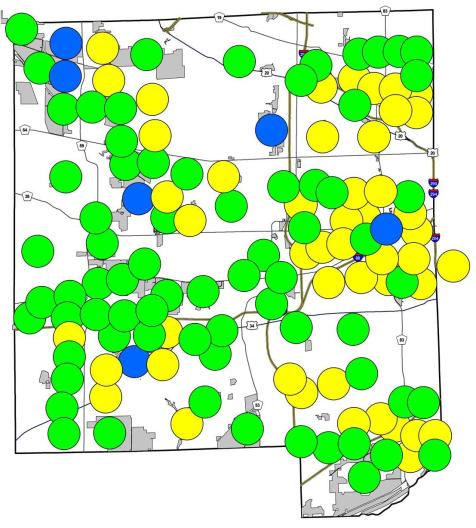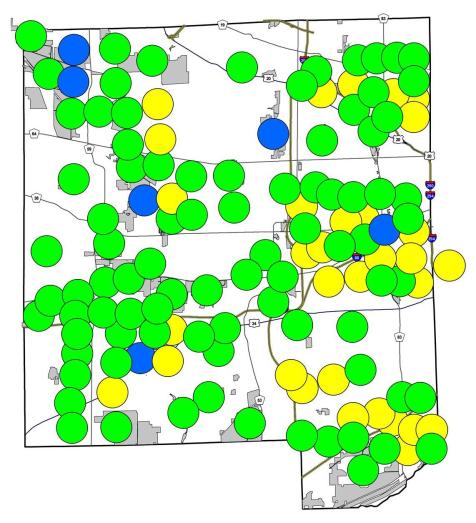by Carl Strang
For a few years, now, I have been puzzling over the geographic distribution of our two field crickets, the spring field cricket and the fall field cricket, in DuPage County. Though these two sibling species occur together in most places, they don’t always do so, and I have been conducting driving surveys to map out where each species may be found. Here is the map as of the end of last year:

Green circles represent places where both species may be found. Yellow circles are fall field crickets only, blue circles are spring field crickets only.
Many of the yellow circles were places where the habitat looked good for both. After last year’s survey, however, I read that spring field crickets sing more in the morning than in the evening, when I had been listening. Over the past couple of weeks I have returned to all the yellow circle areas, and was able to revise the map.
It became clear that the places which remained without spring field crickets all had inappropriate habitat. Most of them were all pavement or mowed lawn, some were wetlands, some were wooded. Fall field crickets are more tolerant of some of those areas, and so their more widespread distribution can be accounted for by current conditions.
Those few blue circles now represent the unresolved aspect of the story. Most of them I have checked more than once, and all seem to be good habitat. This may be some accident of history, a local population being removed by a past event. If that is it, the crickets may immigrate and re-establish themselves. I plan to check those places again, perhaps in a couple of years, to see if that happens.
There is a clear precedent at Mayslake Forest Preserve this year. It’s my 6th season of surveying that site, and the first in which there have been spring field crickets, 4 widely scattered individuals. Fall field crickets should be at least as able to disperse.


Lisa Rainsong said,
June 25, 2014 at 10:08 am
Thank you for posting this information. I very much appreciate being able to read what you learn about crickets and katydids over a period of years.